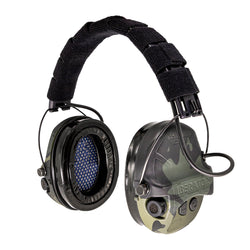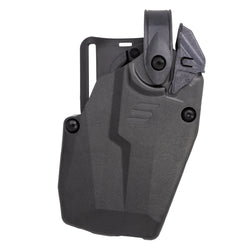Ammunition is gold to gun guys, right? We buy some to shoot and a little more to put up for that rainy day.
Years ago, I made a new year’s resolution to train more and save up some ammo. My rule was, if I buy any ammo to shoot, I had to buy the same amount to put away. That sounded like a great plan. But what really happened is I would buy two boxes of ammo and then decide to keep them both and shoot later.
Needles to say, may range training suffered a bit in those days. But ammo was always on some weird roller coaster ride between plentiful and scarce supply. The magical way it disappears from the shelves is probably what drives most of us to save some up.
Storing ammo for the long haul is not hard, but it does take some planning and a little elbow grease.
For clarity, when I talk about storing ammo, I’m talking about beyond your mags that are ready to go. It goes without saying, you should always have some mags ready. Today, we are discussing ammo storage beyond the loaded mag, and how to access it quickly if needed.
Improper storage, the enemy of ammunition
When stored correctly, ammunition can last for a mind-boggling amount of time. I’ve heard stories of filled magazines from WWII still functioning properly.
But when it’s stored improperly, your prized ammunition can degrade and eventually become useless.
Moisture is the number one enemy for ammo. It leads to corrosion on casings, primers, and even the projectile itself. Brass casings can tarnish, steel-cased ammo can rust, and primers exposed to excess moisture can fail to ignite. These are all bad things.

Powder also degrades over time when exposed to humidity and extreme temperature changes, leading to misfires or inconsistent velocity.
Excessive heat, such as in a vehicle trunk during summer, or in an attic, can cause propellant deterioration. Freezing temperatures, while generally less harmful, may lead to brittle casings and weakened primers over time.
One overlooked factor in long-term storage is exposure to air. When moisture is in the air, it causes oxidation, which speeds up corrosion.
Ideal ammo storage conditions
Ideally, ammunition should be stored in a cool, dry environment, away from direct sunlight and rapid temperature fluctuations.
Desiccant packs inside storage containers help absorb moisture and slow down this process. Humidity levels should be kept below 50 percent whenever possible. A dehumidifier is a smart investment for those storing large quantities in basements, garages, or sheds.
Types of storage containers
We know what’s not good for ammo, but now let’s talk about properly storing your ammunition for long periods of time. Let’s also talk about how to make it accessible and ready for your specific needs.
The first thing we will discuss is the types of storage containers you can use for your ammunition. Different types of containers offer varying levels of protection, ease of transport, and accessibility.
Here are some container ideas.
Military Ammo Cans
Military surplus ammo cans are among the best options for long-term storage. They are made of metal with a rubber gasket seal that is airtight and moisture resistant. They are also extremely durable, which is important for keeping the seal intact.
One downside to using military ammo cans is that they can be heavy, and some older surplus cans may have worn-out seals. Checking and replacing gaskets periodically is a good idea. Use a rubber conditioner or silicone spray to keep the rubber gaskets in good condition.

Plastic Ammo Cans
Plastic ammo cans are popular because they are lighter than those old military surplus cans. Some of these also have rubber gaskets like in the cans, and they are very affordable.
One issue I have found with plastic ammo cans, however, is that they are too flimsy. If you close one and push on the sides, they will bend just enough to pull the seal away from the lid. The weight of too much ammo in one could push out on the sides, making the seal ineffective.
For me, plastic ammo cans are great for short-term storage and hauling ammo to the range. I prefer not to use them for long-term storage.
One-gallon paint cans
This one may sound a little odd, but I’ve found that new one-gallon paint cans work pretty well for storing some types of ammo.
Of course, this wouldn’t be the right shape for storing boxed ammo, but it works well for bagged ammo. These types of cans are new with no label and come with a lid that must be tapped on with a rubber mallet.
I use these types of cans for storing some of my bagged ammo (which we will discuss below). They are airtight when the lid is on and easy to carry. Keep in mind, however, that removing the lid requires a screwdriver, so it’s not what I would call “rapid access.” You can find these online or in local stores for about $5 when they are on sale or purchased in quantities.
Tool crates and boxes
This isn’t the type of container you normally think of when talking about storing your ammunition. But some types of containers and totes work pretty well for storing ammunition, especially when it needs to be portable. And hauling things around is exactly what these types of containers are made for.

I’ll admit I’m just a little biased towards Milwaukee when it comes to tools. Their quality is great, and they make an awesome Packout system. I use these for secondary storage, meaning the ammo I place in them is already sealed up. This allows a portion of my ammunition to be portable in larger quantities.
The Milwaukee Packout toolboxes do not come with rubber seals, but you can purchase them for the boxes. Other brands of toolboxes will also work, just make sure they’re sturdy enough to haul around ammo.
Factory Packaging
Ammunition stored in its original factory box offers great protection, but if kept in a climate-controlled environment, it can last for years. For better preservation, factory boxes can be vacuum-sealed to prevent exposure to air and moisture, which we will also talk about shortly.
Regardless of the container used, proper labeling is important too. Marking containers with caliber, brand, and purchase date helps with inventory management and rotation.
PVC Pipes
This one sounds a little weird, but if you want a cheap way to store some ammo with decent protection, try a PVC pipe. This method is mostly used when someone needs to store ammo underground, but it can also be used above ground.
For this project, you will need a piece of 4-inch drainpipe (cut to your desired length) and two end-caps. You will also need some pipe cleaners and glue. Ammo stored in a pipe like this is best if it’s in a Mylar bag and vacuum sealed (see below).
Put it underground or build whatever creative storage system you want with multipole pipes. If the pipes are stored indoors, you can leave one end un-glued if you would like to access it from time to time. Just be sure to throw some desiccant packets in there before putting the cap back on.
Should ammunition be vacuum sealed?
Vacuum sealing ammunition is a debated topic, to say the least. But then again, just about all gun topics are hot debates these days.
Some claim that the negative pressure created during sealing could potentially damage primers or casings. However, there is no strong evidence to suggest that vacuum sealing ammunition will harm it.

Standard atmospheric pressure at sea level is 14.7 psi. A commercial vacuum sealer will create approximately 11.8-14.3 psi of negative pressure. A standard round, like a 9mm cartridge, has a primer that is seated with enough tension that it will not harm it.
A stronger vacuum seal could possibly do damage over time, but this would not be caused by a household vacuum sealer. I’ve been vacuum sealing ammunition for more than a decade with no problems. But if you want to stay on the safe side, only vacuum-seal ammo that is in some other type of pre-packaging.
Here are the two types of packaging for ammo I use when vacuum sealing.
Vacuum-sealed boxed ammo: Good for long-term storage
Vacuum sealing boxed ammo is a perfect way to store it, and it makes it easier to handle. I use bags that are 11 inches wide and cut long enough for four boxes to fit inside. Add a desiccant packet before sealing it up. If you are worried about pressure, stop the vacuum sealer a little early so you don’t cause as much negative pressure.

For optimal protection, I vacuum-seal the boxed ammo and then place it in a military surplus ammo can with additional desiccant packets. This is probably the best way to store ammo for the long haul.
Vacuum-sealed, bagged ammunition: Best for long-term storage
Because you can save money purchasing loose ammo by the case (most of the time), I like to repack it. For loose ammo, I use Mylar bags in a variety of sizes.
With Mylar bags, I place the desired number of rounds in the bag, add a desiccant packet, and then heat seal the back closed. Most Mylar bags have a zip-lock feature on them, so when you tear open the heat-sealed portion, you can still close it.

Once my ammo is in a Mylar bag and heat-sealed, I then vacuum-seal multiple bags into one package with another desiccant packet. Sometimes I even place the vacuum-sealed package into an ammo container with yet another moisture-absorbent pack.
When using this method, you have three layers of protection for your ammo, making it the best for long-term storage. It’s overkill, but we’re talking about our precious ammo here!
Storing Ammo for Quick Access
Here’s the biggest conundrum with storing ammo. We all want our ammo to last for 500 years in case we ever need it, but we also need it accessible, don’t we?
Storing ammo normally consists of large, heavy ammo cans full of perfectly packed bulk ammo. If you have just a few minutes, it may be hard to dig it out, unpack it, and haul some of it to wherever it’s going. When you can grab multiple bags of ammo that have the exact amount to refill a magazine, the process is faster.
Like any other area of preparedness, I like to have multiple stages of storage vs access for my ammo.
Here are the stages I use for preparing and storing my ammo:
- Filled mags – ready to go
- Rapid access storage (ammo packaged in small amounts for specific mags)
- Long-term storage (with options to make it portable)
Here’s a breakdown
The bulk of my ammo is stored for the long haul using the methods mentioned above. Boxed or bagged ammo, vacuum sealed, and then placed in ammo cans.
Second, I keep some ammunition in Mylar bags with just enough ammo for the magazine it is intended for. I keep these in some ammo cans, my go-bag, vehicle, range bag, and a few other places. When opening an ammo can, you can quickly grab however many bags you need for the same amount of magazines you need to fill.
Third, I keep enough magazines loaded and ready to go for an emergency. If something happens, I have guns and ammo ready, but I also have bags of ammo I can quickly grab or hand out. The larger amounts are stored in ammo cans and can be accessed as time allows.
I’m not saying I always unbox my ammo to distribute in Mylar bags, but when you have bulk ammo to do something with anyway, it’s handy. It’s annoying that most 5.56 ammo comes in 20-round boxes, but the mags hold 30 rounds, right? This is the same for just about every caliber of ammunition you purchase in a box.

So, I pack some 5.56 ammo in Mylar bags with 30 rounds in them. For my Glock mags, I pack them for 17 per bag, and so on. Add a moisture absorbent pack, heat seal the bag, and it’s ready for storage while being quickly accessible.
This is basically the backup for my loaded mags, and the bulk ammo I store is the backup’s backup.

Smaller bags like this are also great for keeping some ammo in various places of your home, vehicle, backpack, etc.
My favorite rapid access ammo can includes pre-packaged bags of 5.56 (one bag per magazine) and 9mm (one bag per mag) because that’s what I use the most. I like being able to tear open one bag and have the exact amount of ammo needed for that mag.
Store your ammo so it works for you
Deciding how much ammo to store and in what configuration will vary from one person to the next. You may want to keep enough ammo to fill two or three mags in each bag. What’s cool with packaging it yourself is that you can do it however you want.
If you want to keep ammo stored in the “loose” condition, you can do that too with a good ammo can and desiccant packs. The point is, there are plenty of ways to store ammo, as long as it’s dry, cool, and away from moisture.
Hopefully, some of these other ideas will be helpful as you continue your journey down that never-ending, ammo storage road.









